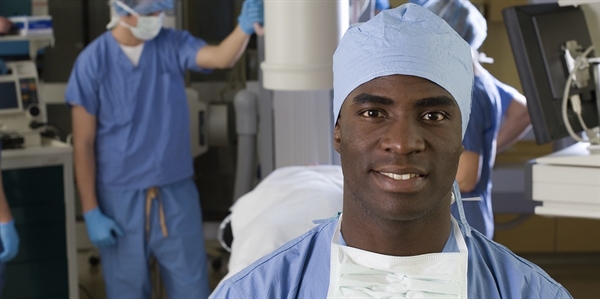Change is the nature of the beast when it comes to medicine. Perhaps more than any other profession, medicine requires its practitioners to embrace rapid changes—changes in technology, procedures, best practices, medical devices, pharmaceuticals—you name it. That’s because medicine—including nursing care—is science based. That’s not to say change doesn’t occur at a distressingly slow pace occasionally. The history of medicine is riddled with examples of life-saving changes that could have been embraced and implemented sooner.
Nevertheless, in today’s technology-driven, instant information-sharing culture, advances in medical science are occurring with increasing rapidity. Less so than among other professions, there is little room for opinion, tradition or speculation in medicine. It’s about what’s proven to work best.
Nursing professionals must base their behaviors and activities in the workplace on factual information. The overarching goal is always to improve patient health outcomes. If a change improves efficiency, so much the better. If it affects safety, the focus swings back to the primary goal; does it improve patient outcome (without compromising safety), while also providing for nurses’ occupational safety concerns?
Some of the core skills and activities required of nurses in the past are rapidly disappearing from the modern medicine scene. In most cases, it’s for a good reason, or it’s the result of changing technology. As you’ll see, many of the more recent changes have improved things for patients and nurses alike.
Reuse of Basic Healthcare Delivery devices
Back in the day, nurses routinely recycled syringes, urinary catheters, and similar patient-contact items. The thought is unthinkable now. Of course, the items were sterilized between use, but the extra work—and cost—became prohibitive. Thankfully, these days nurses are not required to ensure that these items are recycled properly. On the other hand, in the past, there was arguably less of a focus on sharps awareness and safe disposal. Occupational exposures to infection are less likely today. Win-win for today’s nurses.
Glucose/Insulin Guesswork
The nurse’s cap-wearing nurse of yesteryear was required to use urine dipsticks to obtain sliding-scale insulin dispensing information. There were few, if any, glucose meters. Calculating insulin dosing for diabetic patients was accomplished by nurses using relatively imprecise urine dipsticks. Handy in a crisis, but today’s methods are far simpler, more accurate, and more reliable.
Count the Drops
Before IV infusion pumps, nurses had to set and adjust infusion rates according to complicated calculations that depended on their observations of timed drip rate. Today’s digital devices have eliminated the need for this extra work, as well as taken some additional pressure off the shoulders of overtaxed nurses.
Take Off Your Barber’s Cap
Until quite recently, it was standard operating procedure everywhere to shave patients of any body hair before any surgery involving incisions in the affected area. The task fell to aides often enough, but nurses were required to do their share of pre-op barbering. Those days are fast disappearing, thankfully. Research suggests this practice not only didn’t improve outcomes, but may actually have boosted post-infection rates. At most, surgical nurses now use clippers as needed.
Shake It, Don’t Break It
In the good old days, accurate thermometers contained the toxic heavy metal, mercury. While it’s true that breakage was relatively rare, these simple devices also tended to give inaccurate readings if care was not taken to shake any errant liquid metal down before use. Thus, every nurse learned to do the vigorous downward thermometer shake without even thinking about it. Today’s digital thermometers are faster, more sanitary.
Paper Charting
Nurses graduating today can barely conceive of a time when all charting was accomplished with pen and paper. Some things are better now, plain and simple.

